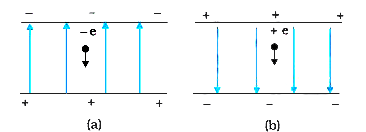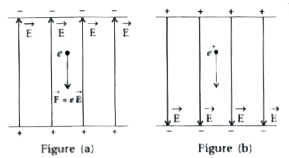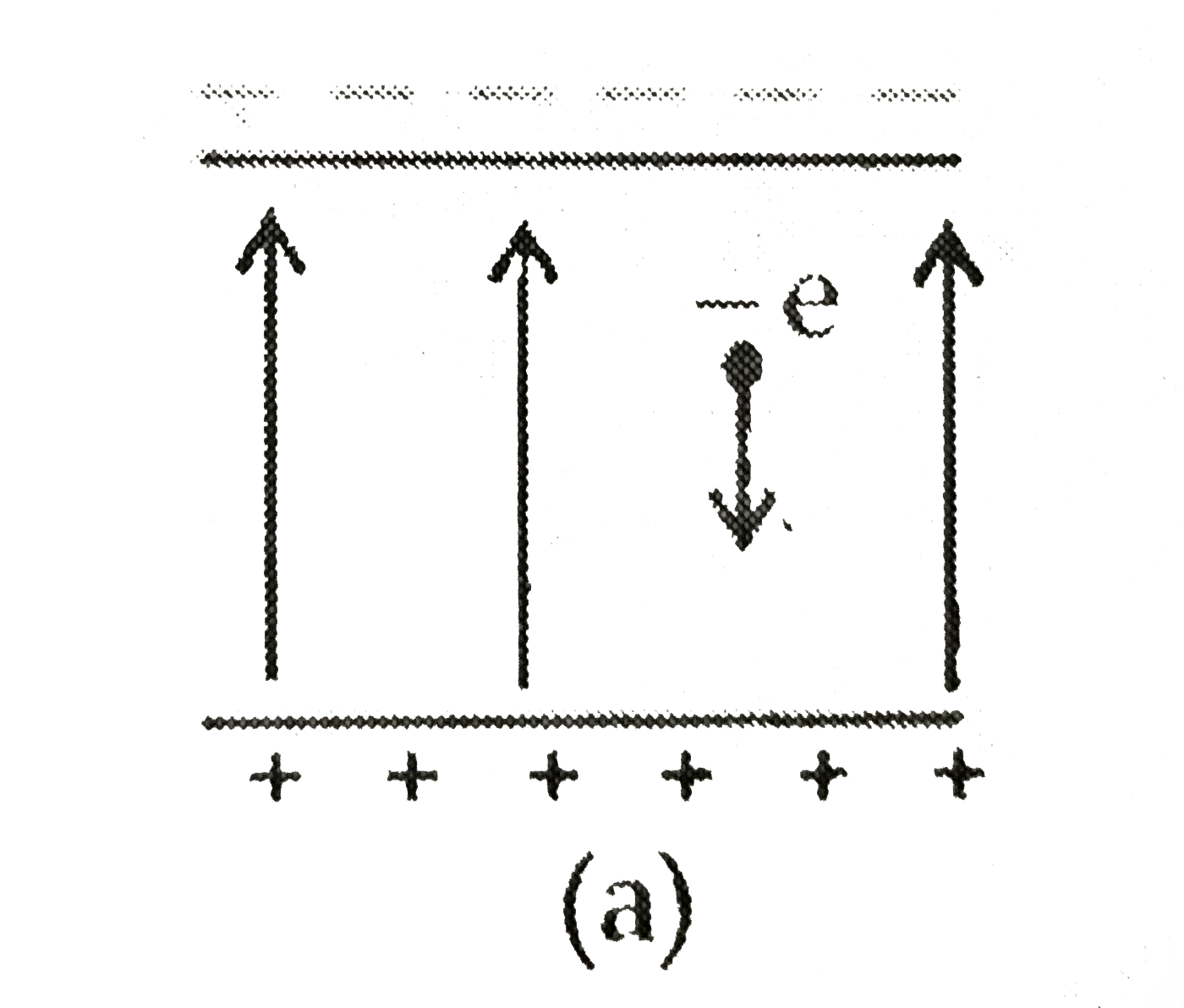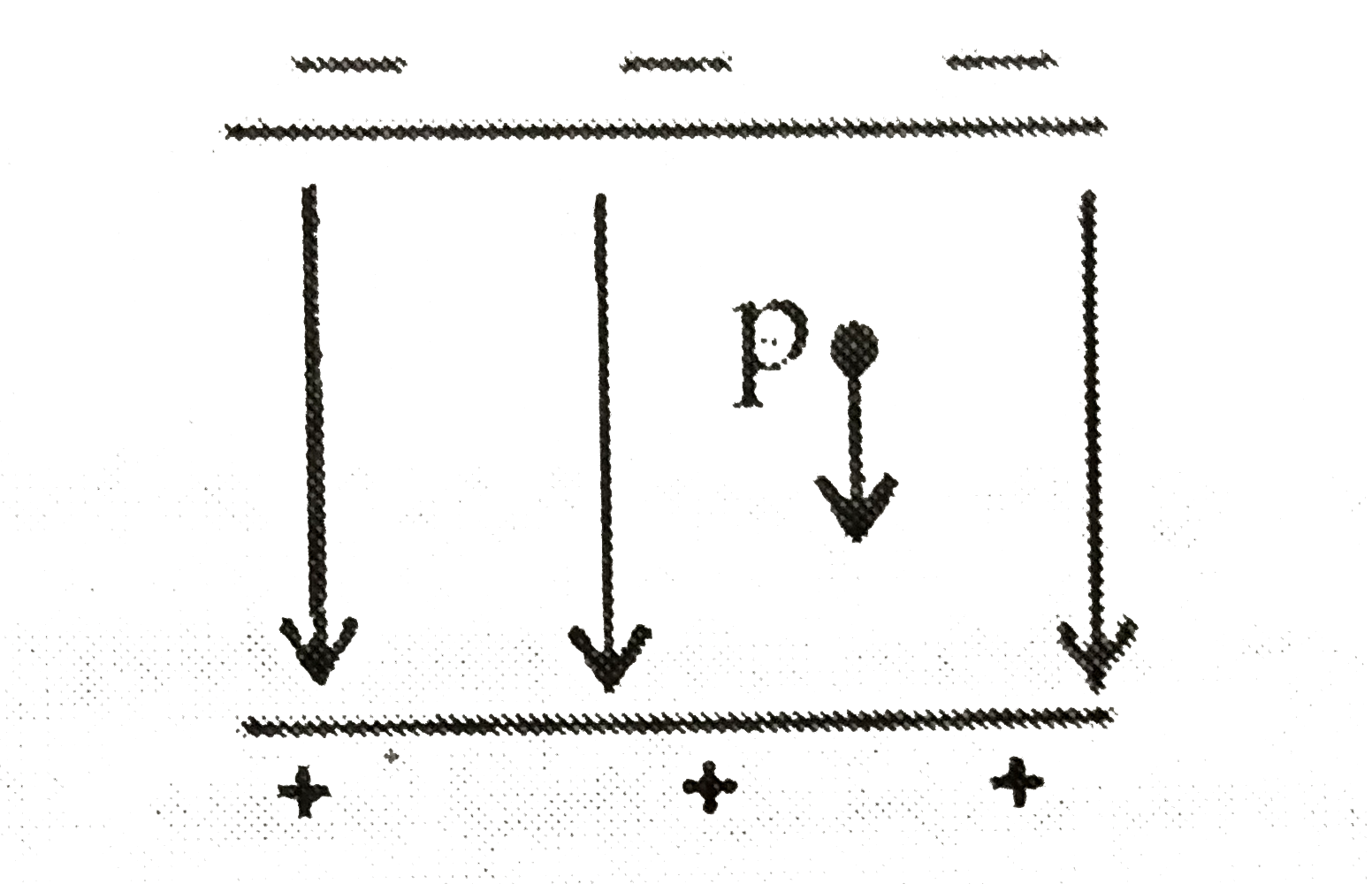An electron falls through a distance of 1.5 cm in a uniform electric field of magnitude 2.0×104NC−1. The direction of the field is reversed keeping its magnitude unchanged and a proton falls through the same distance. Compute the time of fall in each case. Contrast the situation with that of 'free fall under gravity'.
 Solution in Telugu
Solution in Telugu
In Fig. (a) the field is upward, so the negatively charged electron experiences a downward force of magnitude eE where E is the magnitude of the electric field. The acceleration of the electron is ae=eE/me
Where me is the mass of the electron.
Starting from rest, the time required by the electron to fall through a distance h is given by te=√2hae=√2hmeeE
For e=1.6×10−19C,me=9.11×10−31kg.
E=2.0×104NC−1,h=1.5×10−2m.
te=2.9×10−9s
In Fig. the field is downward and the positively charged proton experiences a downward force of magnitude eE. The acceleration of the proton is ap=eE/mp
Where mp is the mass of the proton, mp=1.67×10−27kg. the time of fall for the proton is
tp=√2hap=√2hmpeE=1.3×10−7s
Thus, the heavier particle (proton) takes a greater time to fall through the same distance. This is in basic contrast to the situation of, free fall under gravity' where the time of fall is independent of the mass of the body. Note that in this example we have ignored the acceleration due to gravity in calculating the time of fall. To see if this is justified, let us calculate the acceleration of the proton in the given electric field
ap=eEmp=(1.6×10−19C)×(2.0×104NC−1)1.67×10−27kg
=1.9×1012ms−2
Which is enormous compared to the value of g (9.8ms−2), the acceleration due to gravity. The acceleration of the electron is even greater. Thus, the effect of acceleration due to gravity can be ignored in this exmaple.
Similar Questions
An electron falls throgh a distance of 1.5 cm in a uniform electric field of magnitude 2.0 xx10^(4) N c^(-1) the direction of the field is reversed keeping its magnitude unchanged and a proton falls through the same distance compute the time of falls in each case contrast the situation with that of free fall under gravity
View SolutionAn electron falls throgh a distance of 1.5 cm in a uniform electric field of magnitude 2.0×104Nc−1 the direction of the field is reversed keeping its magnitude unchanged and a proton falls through the same distance compute the time of falls in each case contrast the situation with that of free fall under gravity

View SolutionAn electron falls through a distance of 1.5 cm in a uniform electric field of magnitude 2.4×104NC−1 [Fig.1.12 (a)]. The direction of the field is reversed keeping its magnitude unchagned and a proton falls through the same distance [Fig. 1.12 (b) ]. Complute the time of fall in each case. Contrast the situation (a) with that of free fall under gravity.

View SolutionAn electron falls through a distance of 1.5cm in a uniform electric field of magnitude 2×104NC−1. The direction of the field is reversed keeping its magnitude unchanged and a proton falls through the same distance. Compute the time of fall in each case.
View SolutionAn electron falls through a distance of 2 cm ir a uniform electric field of magnitude 6.0×104NC−1 figure (a). The direction of the field is reversed keeping its magnitude unchanged and a proton falls through the same distance figure (b). Compute the time of fall ir each case. Contrast the situation with that oi 'free fall under gravity'.
me=9.1×10−31kg,mp=1.7×10−27kg and e=1.6×10−19 C

View SolutionAn electron falls through a distance of 1.5 cm in a uniform electric field of magnitude 2.0×104N/C(Fig.a)

Calculate the time it takes to fall through this distance starting from rest. If the direction of the field is reversed (fig .b) keeping its magnitude unchanged , calculate the time taken by a proton to fall through this distance starting from rest.

View SolutionAn electron falls throgh a distance of 1.5 cm in a uniform electric field of magnitude 2.0 xx10^(4) N c^(-1) the direction of the field is reversed keeping its magnitude unchanged and a proton falls through the same distance compute the time of falls in each case contrast the situation with that of free fall under gravity
View SolutionA proton falls through a small distance in a uniform electric field of magnitude 1.8xx10^5N/C . The direction of the field is reversed keeping the magnitude unchanged and an electron falls through the same distance. The time of fall will be
View Solution
